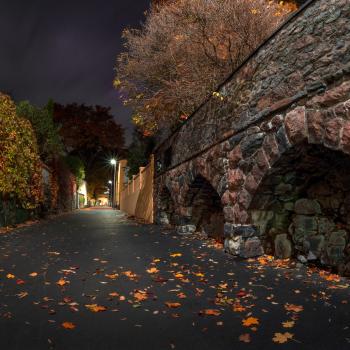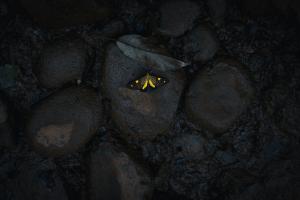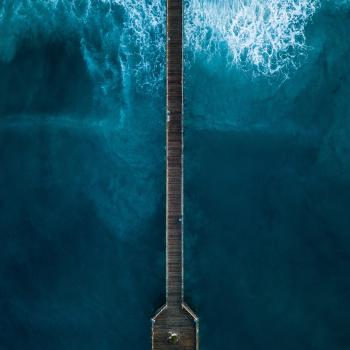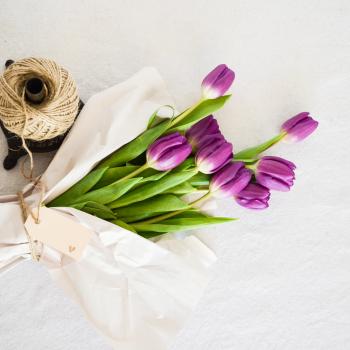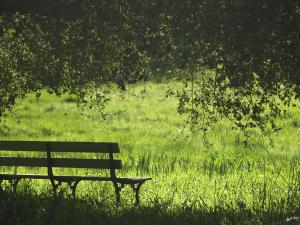 Amidst the constant stream of bad news these days, we would do well to make more time for acknowledging the good things in life. The ode is just that: “a formal, often ceremonious lyric poem that addresses and often celebrates a person, place, thing, or idea,” according to The Poetry Foundation.
Amidst the constant stream of bad news these days, we would do well to make more time for acknowledging the good things in life. The ode is just that: “a formal, often ceremonious lyric poem that addresses and often celebrates a person, place, thing, or idea,” according to The Poetry Foundation.
Unlike other poetic forms I’ve been exploring these past months, such as sonnets, sestinas, and villanelles, the ode seems less form than mode, defined primarily by intent and tone rather than a prescribed rhyme scheme or meter.
That’s not to say an ode can’t be written in form. Pindar, the ancient Greek poet who made odes famous, employs a particular triadic structure for most of them, and the English Romantics range from Pindaric to Horatian to irregular in form.
Here’s a well-loved Keats poem, written in the uniform stanzas of the Horatian ode:
To Autumn
Season of mists and mellow fruitfulness,
Close bosom-friend of the maturing sun;
Conspiring with him how to load and bless
With fruit the vines that round the thatch-eves run;
To bend with apples the moss’d cottage-trees,
And fill all fruit with ripeness to the core;
To swell the gourd, and plump the hazel shells
With a sweet kernel; to set budding more,
And still more, later flowers for the bees,
Until they think warm days will never cease,
For summer has o’er-brimm’d their clammy cells.
Who hath not seen thee oft amid thy store?
Sometimes whoever seeks abroad may find
Thee sitting careless on a granary floor,
Thy hair soft-lifted by the winnowing wind;
Or on a half-reap’d furrow sound asleep,
Drows’d with the fume of poppies, while thy hook
Spares the next swath and all its twined flowers:
And sometimes like a gleaner thou dost keep
Steady thy laden head across a brook;
Or by a cyder-press, with patient look,
Thou watchest the last oozings hours by hours.
Where are the songs of spring? Ay, Where are they?
Think not of them, thou hast thy music too,—
While barred clouds bloom the soft-dying day,
And touch the stubble-plains with rosy hue;
Then in a wailful choir the small gnats mourn
Among the river sallows, borne aloft
Or sinking as the light wind lives or dies;
And full-grown lambs loud bleat from hilly bourn;
Hedge-crickets sing; and now with treble soft
The red-breast whistles from a garden-croft;
And gathering swallows twitter in the skies.
Pablo Neruda wrote odes on everything from socks to tomatoes to sadness, and Sharon Olds, in her newest collection (um, Odes) praises the likes of tampons, condoms, trilobites, and the San Francisco Bay. Yes, the possibilities truly are endless.
So, having submerged myself in Celtic music over the past few years, I’ve decided to write a series of odes celebrating Irish musicians, many of whom dedicate themselves to instruments we don’t find in most elementary school bands, such as bodhrans, bouzoukis, and uilleann pipes.
I wanted to celebrate them by attempting to understand their language. While I am a musician, I have literally never touched a number of these instruments. Without enough time or money available to learn them, I’ve had to find fresh ways to encounter their essence.
Writing about music requires ekphrasis, or engaging a work of art through poetry. Without a visual form to hang onto, music writing almost always requires some sort of synesthesia, or mixing of senses, in order to tap into the spirit of a sound. Such an approach leads to figurative language, of course, a common feature of odes.
When writing a poem of celebration, you must know how you’re praising the subject and why, holding it to the light to inspect if from different angles. What results is a rich collection of colors and light, metaphor with “ripeness to the core.”
So I not only listened to these instruments and watched their players both on video and in live performance, but interviewed some as well, including a couple of bodhran players, Amy Richter from the Milwaukee-based Irish band Athas, and Chris Lang, one of my closest friends and fellow member of our own little group we call the Lindeneers.
Writing about musicians has helped me understand them and love their music a little bit more. That’s what writing poetry does—transforms the writer (and, one hopes, the reader) by giving oneself over completely to the subject and the language it evokes.
Ode to a Bodhran Player
Your left hand caresses the inner skin
like the small of a lover’s back.
Your right hand flicks the tipper—
whomp–glug–clackclack–whomp–
jouncing with the dancers’ ringlets
as the goat stretched over the frame
scampers back to life
among the fiddles and pipes.
I don’t know my way without it,
you say. And I understand
you mean more than the passage
of a song. Your day winds through
the bodhran beats like a current
through stone. You hold on
when stormswept and pummeled
and cold. Even when you sleep
you collect the silt that flickers off
the jigs and reels,
heartbeat of light in your hair.
Find something that you love, or maybe even something you don’t, and regale it with an ode. Give yourself to the true, noble, lovely, and excellent practice of praise.
 Tania Runyan is the author of the poetry collections What Will Soon Take Place, Second Sky, A Thousand Vessels, Simple Weight, and Delicious Air, which was the Conference on Christianity and Literature book of the year in 2007. When not writing, she plays fiddle and mandolin, drives kids to appointments, and gets lost in her Midwestern garden.
Tania Runyan is the author of the poetry collections What Will Soon Take Place, Second Sky, A Thousand Vessels, Simple Weight, and Delicious Air, which was the Conference on Christianity and Literature book of the year in 2007. When not writing, she plays fiddle and mandolin, drives kids to appointments, and gets lost in her Midwestern garden.



